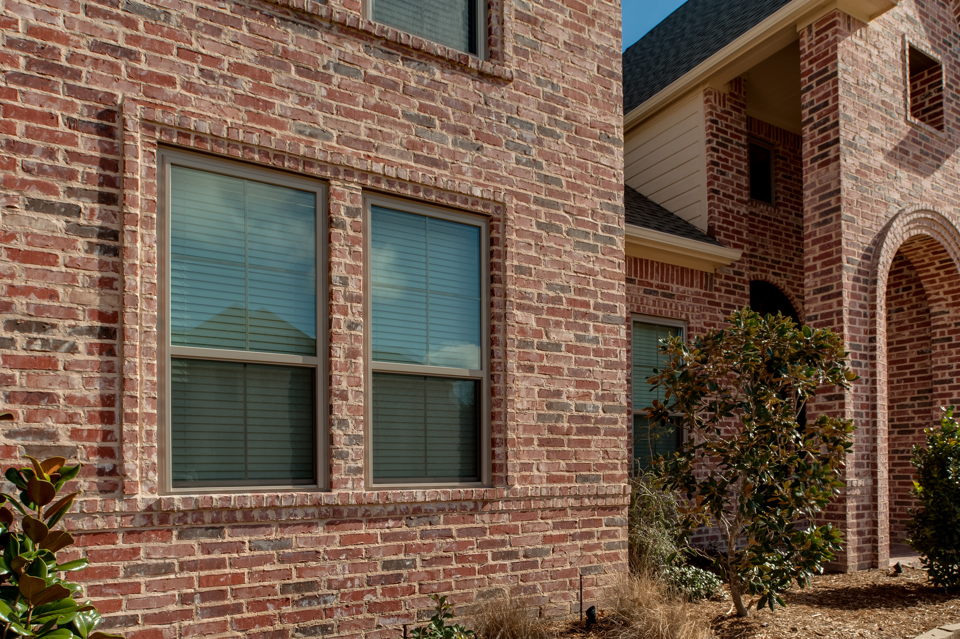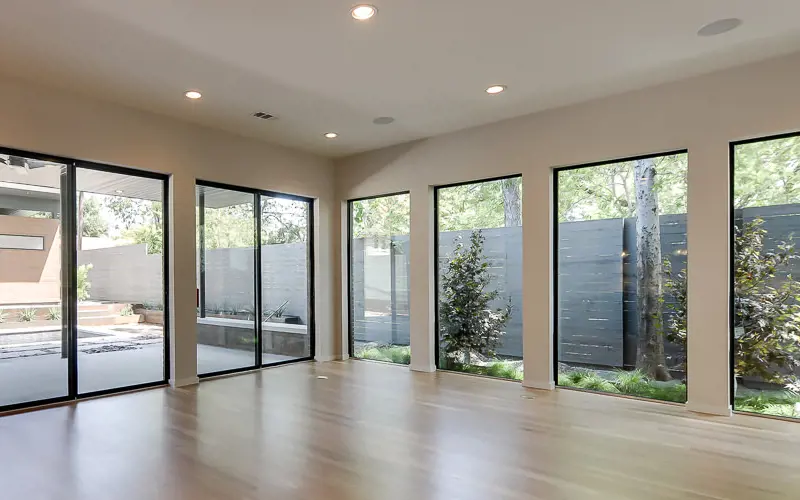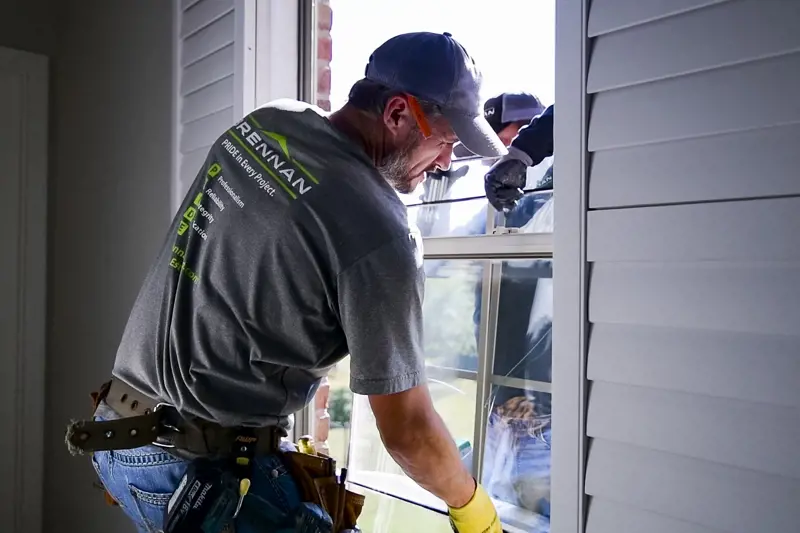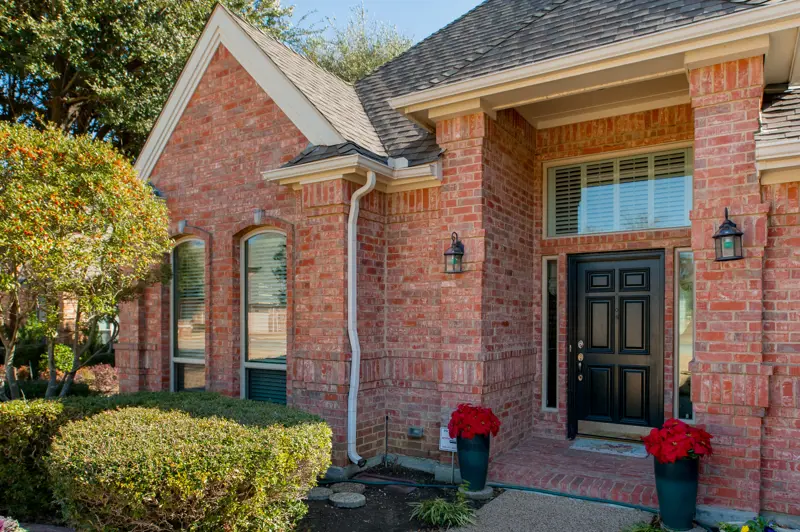
Double Pane Windows vs Triple Pane Windows
There are many elements that contribute to the energy efficiency of your home. The more energy-efficient your home is, the more savings you should see on your energy bill. Whether you’re shopping for appliances or building materials you’ll notice that energy efficiency is a major selling point.
This is true when it comes to replacement windows as well. According to the Office of Energy Efficiency & Renewable Energy (an office of the U.S. Department of Energy), “Heat gain and heat loss through windows are responsible for 25%-30% of residential heating and cooling energy use.” That means if the windows in your home aren’t energy efficient your heating and cooling unit(s) are working harder to keep your home comfortable.
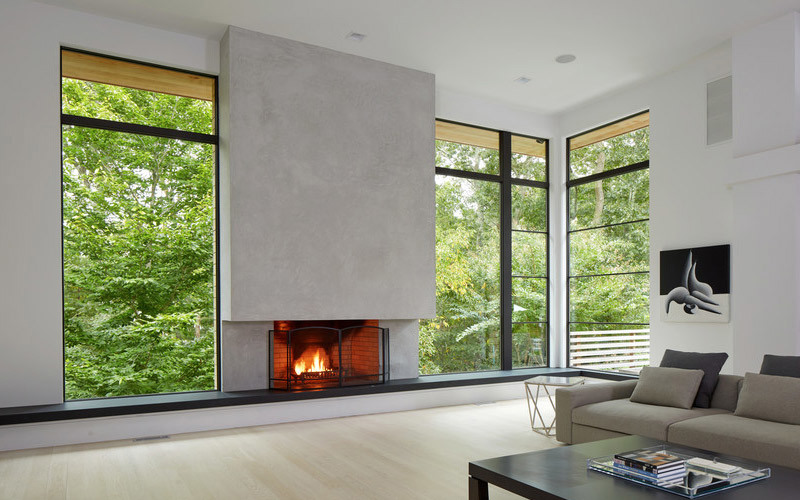
The Office of Energy Efficiency & Renewable Energy recommends choosing the most efficient window and glass package that you can afford and that works best in your climate. Your window retailer should recommend high performing glass packages for your residential windows that are both affordable and meet the requirements of your climate zone.
There are many options when it comes to choosing glass packages but in this article, we’ll compare two insulated glass options–double pane glass and triple pane glass.
Why not single pane glass? Well, single pane glass just doesn’t make the cut anymore. Single pane glass window units hold no insulating value. Unlike double and triple pane glass windows, single pane glass is best reserved for non-heated buildings like a garage or shed.
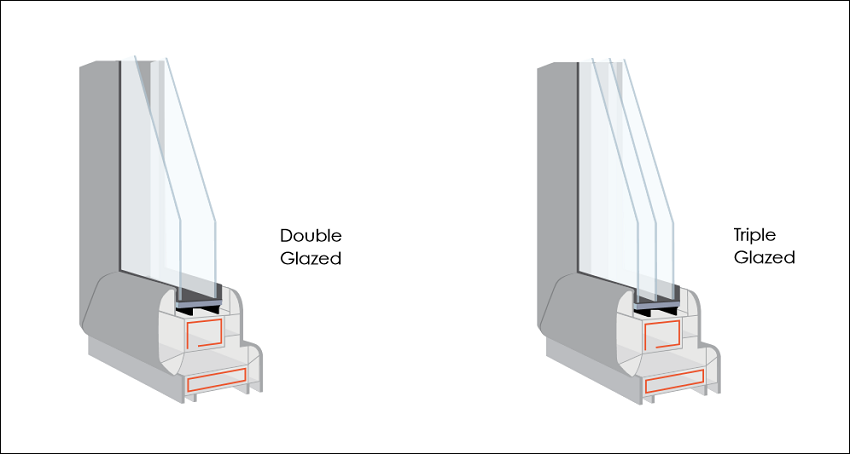
So what’s the difference between double pane glass and triple pane glass?
In a nutshell, the difference between double pane and triple pane glass units is the number of glass panels that are inserted in a window sash. For double pane that means two panels and for a triple pane that means three panels of glass.
The number of glass panels doesn’t do much alone because glass itself is actually a thermal conductor. The real insulating power is in the gas which fills the space between the panes. With single pane windows, there is no space only glass.
The inert gas used in insulated glass units (IGUs) acts as a barrier to heat transfer. In the winter it prevents heat loss (interior heat escaping through the window glass) and in the summer it prevents heat gain (exterior heat entering through the window glass).
Which is better? Double Pane or Triple Pane?
We can’t fairly say triple pane glass is better than double pane glass because what’s best depends on the climate in your region and what you can afford.
Finding prices for residential windows online can be difficult, especially from custom window retailers so to give you an idea of the price here’s an example using one of our windows:
Brennan Traditions single hung window in white with high-performance glass (2018)
- Double Pane Glass Unit: $545
- Triple Pane Glass Unit: $622
As you can see a triple pane glass package costs slightly more than a double pane glass unit. For one unit that’s a difference of $77 but for a project requiring 20 windows that’s an additional $1,540.
The truth is that as long as the windows are installed well, you can expect either option to improve your energy savings.
At a minimum you’ll want your windows to meet local energy code requirements, choosing windows that are ENERGY STAR qualified usually meets or exceeds local code requirements.
Understanding energy properties and the NFRC label can help you decide which window is best for your home and budget
The National Fenestration Rating Council (NFRC) is a nonprofit organization created by those in the window, door, and skylight industry. This organization developed the energy rating system that building codes, tax credits, ENERGY STAR, and others base their energy efficiency criteria on.
The NFRC label provides two key energy performance ratings for windows, the U-Factor and Solar Heat Gain Coefficient (SHGC). It also provides ratings for Visible Transmittance, Air Leakage, and Condensation resistance.
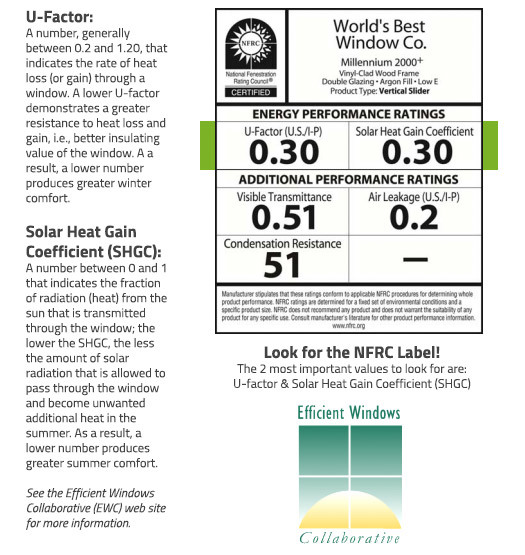
U-Factor and SHGC are the two most important elements, you’ll want to pay attention to these as you consider the difference and value between double or triple pane windows. NFRC labels provide ratings for the whole window unit, including glass, frame, and spacers.
You may sometimes find additional ratings for center-of-glass which describes the performance of the glass without consideration for the frame. Although we consider the glass the most important when it comes to energy efficiency, you’ll want to consider the energy performance of the whole window unit when the time to make your purchase arrives.
U-Factor indicates the rate of heat loss of a window unit. The lower the value the greater the window’s insulating properties.
SHGC indicates how much solar radiation is transmitted through a window. The lower the value the less solar heat the unit transmits.
You’ll want to choose windows based on ENERGY STAR’s recommendations for your climate zone.
What do we recommend?
Our company is located in North Texas, we’re located in ENERGY STAR’s South/Central Zone. The required U-factor and SHGC for windows in our zone are as follows:
U-factor: ≤0.30
SHGC: ≤0.25
We want you to choose a window unit that meets energy code requirements and that won’t break the bank. That means you also have to choose a trustworthy installer because even the best windows aren’t worth the expense if they are installed poorly. A poor installation often leaves more air pockets that reduce the energy performance of your home.
Take a look at this comparison for thermally improved, non-metal frame windows with low-solar-gain Low-E glass (from the Efficient Windows Collaborative):
Whole Window Properties - Low-solar-gain Low-E Glass

If we were comparing windows based on these properties and budget wasn’t a concern we’d say both meet the ENERGY STAR qualifications for North Texas, so either is a good option. If budget is more of a concern we’d absolutely recommend the double pane window.
Homeowners in North Central and Northern climate zones would benefit more from triple pane windows because they are more likely to see severe winters. In our South Central zone, triple pane windows have fewer opportunities to show you their energy-saving properties.
Remember U-factor indicates the rate of heat loss through a window. In colder climates, the difference between indoor and outdoor temperatures is more extreme in the winter than it is in warmer climates so triple pane windows make more sense there where the U-factor recommendations are lower.
The number of glass panes in your window unit is one of the several elements that contribute to an energy efficient window. A trustworthy window retailer and contractor can help you navigate your options so that you're making the best choice for your home.
Oops!
We don't currently serve your area but do want to help you plan your project. Try our Build & Price tool to get an idea of window & door costs within DFW. Your area may be higher or lower but at least you'll have some idea of the price.
Thanks for stopping by.




